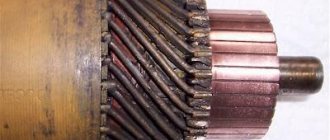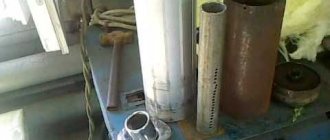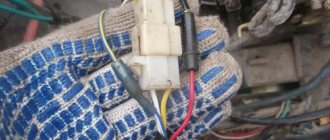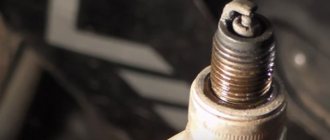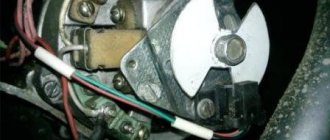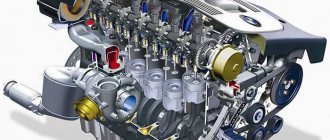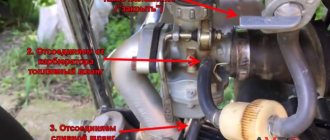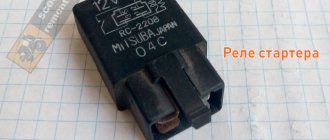The scooter is a fairly common vehicle today; it does not require a lot of fuel, but at the same time it does not provide the incredible speeds that its two-wheeled motorcycle brothers can boast. This is a rather specific type of transport that not everyone will choose for themselves. But all the people who like scooters are always excited about riding them, they have a lot of fun and also find them extremely practical. But at the same time, not a single vehicle is insured against breakdowns, including a scooter.
Malfunctions can be very diverse, but in this article we will talk about electronics, and more precisely, about how to check the switch on a scooter. Naturally, if you have no idea what we are talking about, then you should not immediately take up the tools. It is better for you to calmly and carefully study exactly how the electronics in a scooter work, how checking the switch on a car and on a moped differs, and also what exactly you can do to check the electronics for damage and repair your vehicle. In general, before considering the question of how to check the switch on a scooter, you should understand what it actually is.
Switch and circuit device
How to check the switch on a scooter if you don’t even know what it is and where to look for it? This is why you need to start small. The first thing you need to do is find out what a switch is. In fact, everything is quite simple, since a commutator is an element of the electrical ignition circuit in a vehicle that produces a low voltage pulse that is transmitted to the ignition coil. In isolation from the overall picture, the definition does not look very clear, so it is worth considering the structure of the entire circuit.
So, the main element here is the generator, which generates the operating voltage in order for the switch discussed in this article to work. As mentioned above, using the energy of the generator, the switch generates a pulse for the ignition coil, but not just a pulse - namely a low voltage one. The ignition coil, in turn, generates a high voltage pulse at a specific moment in time, which is transmitted to the spark plug. The spark plug is screwed into the cylinder head and, upon receiving a high-voltage pulse, ignites the combustible mixture, which powers the engine. Well, now you know how the electrical circuit works in a vehicle, which will allow you to better understand how to test the switch on a scooter.
Energy sources
The moped uses a circuit with a battery power source. The manufacturer does not recommend its operation without a battery, and the wiring diagram for the Alpha is additionally equipped with a relay regulator (see also the wiring diagram for UAZ 31512).
The wiring to Alpha is protected from voltage surges
The six-coil generator also copes well with its duties:
- Maintains voltage throughout the entire engine speed range;
- Ensures that the headlights and headlights work while driving.
For reference: the factory instructions do not allow the installation of additional lighting fixtures. Also prohibited for use on a moped
headlight lamps exceed the power specified in the technical documentation.
Malfunction
What prompted you to study the article on how to test the switch on a 4T scooter or any other common model? Most likely, your vehicle has stopped starting, but you don't know what exactly the problem might be. Perhaps the ignition is acting up, perhaps the engine is stalling. All this may or may not have a cause in the switch - this is the main problem of repair. You need to determine where exactly the problem is in order to fix it.
If your switch does not work or does not function well, then the low voltage pulse will not be transmitted to the ignition coil - accordingly, ignition will not occur. But the problem could be in the generator, the coil, or even the spark plug, so you need to know exactly how to check these elements. This material focuses specifically on the switch, so attention will be paid mainly to how to check the switch on a 4T scooter and other popular models.
what to do if the brain (switch) of a motorcycle burns out / Blog named after. gorini4 / BikePost
Hello, Baykpostovchanin. It seems you are using AdBlock. BikePost develops and exists due to advertising revenues. Add us to the exceptions.
open letter how to disable
Blog named after gorini4
3743rd place in the rating of bikeposts and so many people have such a situation that the motorcycle loses a spark somewhere or the spark disappears on one ignition coil. After a full examination, it turns out that the brains (switch) are dead, and since for some motorcycles the brains are extremely expensive I set out to try to restore those same burnt brains. Let me explain: a common cause of brain death is: 1. Overcharging of the generator. 2. Accidentally lost contact at the battery terminals while the engine is running. (ALWAYS CHECK THE BATTERY TERMINALS FOR THE PRESENCE OF OXIDES AND FOR TIGHTENING OF THE TERMINALS. Because this little thing can cost the life of the brains of your motorcycle) More often, and especially in motorcycles since 1990, protection against overvoltage or internal short circuit began to appear in switches (they especially like to make a short circuit capacitors are shorted) and when this protection is triggered, everyone thinks that the switch has suddenly died and simply throws it away, replacing it with a new one. the brain can be easily restored if everything in it burns out except the processor. (if the processor burns out, you just can’t buy it anywhere as a part) if anyone needs help with repairing the brains of the moto, please contact me, I’ll help as much as I can, I’m not attaching photos of the repaired brains because I simply don’t have these photos.
There is also a case when the brains of a motorcycle can be completely replaced with homemade ones (I personally did it myself), this is especially true for motorcycles of the 80s when original brains are very difficult to find, and if you do find them, they will be very expensive.
Switch on car and scooter
Many car enthusiasts may be surprised, since they know that checking the switch on a car is a matter of minutes. To do this, you just need to use a voltmeter, which sometimes even comes directly with the car. You just need to know where to connect what, and no problems arise at all. However, in the case of a scooter, things are a little different.
If you want to know how to check the performance of the switch on your scooter yourself, then you should remember that you will not be able to achieve accurate measurements if your switch remains in the same place where it always is. All this will be discussed more specifically a little later, but for now you just need to understand that checking the switch on a car and on a scooter are slightly different things, so you shouldn’t think that the process will be identical. Read on and you will learn how to test the switch on a scooter with a multimeter, just like on a car, and what are the disadvantages of this method.
Testing the switch with a tester
If you have a special testing device, that is, a tester, then you can use it on the switch, since in any case it can give certain results. You can use a simple voltmeter, or you can use a more universal multimeter, but in any case you need to remember that this part of the scooter has five terminals - to ground, to the sensor, to power, to the ignition coil and to shutdown. If you only have one switch and tester, then you can only check for zero voltage. When the tester needle does not move at one of the outputs, this means that there is no voltage in it.
However, the result of damage is not always a complete loss of voltage - sometimes it may happen that at one of the outputs it will be unstable, low, and so on. And you won’t be able to find out about this unless you have the same switch that has already been measured for comparison. As you understand, this is only a partial test, that is, you can use this method to figure out how to check the switch on a Yamaha scooter or on any other specific model. But if you want to conduct a full check, you will have to use more effective methods. How to check the faulty switch on a scooter with maximum accuracy? For this you will need another work scooter.
Posts 1 page 1 of 1
Share12012-12-05 20:22:31
- Author: ilya
- Administrator
- Registered: 2012-10-22
- Invitations: 0
- Posts: 234
- Respect: [+0/-0]
- Positive: [+0/-0]
- Spent on the forum: 1 day 10 hours
- Last visit: 2013-01-16 12:39:02
Scooter switch - electronic ignition device for a scooter See also Diagram of the simplest switch, without electronic advance.
Scooter ignition advance Operating principle and design of electronic ignition/switch. An excellent article about this is taken from the site ntscooters.moy.su
Over the years of developing cars and motorcycles, we came to the conclusion that this scooter system should be as reliable as possible, because scooters are intended for carefree people
Therefore, Japanese scooters do not have cam ignition systems like IZ motorcycles and scoops (old mopeds). Even the oldest Hondas use an electric sensor. But more on that later. After all, not all scooters have it. For example, Suzuki Sepia has a rather clever shaft position control system. Therefore, you will not find diagrams of this switch on the Internet. It is quite complex in its internal architecture. I'll tell you about this later. Now I want to classify and break down the existing ignition systems on Japanese, Chinese, Korean and European scooters.
Depending on the type of engine, several systems are distinguished. 2-stroke Chinese mopeds have a system exactly copied from Sepia. But in terms of reliability it is simply terrible! The switches in it are on fire, only the noise is there! Personally, they brought me about 5 such mopeds with this symptom. Maybe a defective batch, but still take note. I’ll immediately note a significant difference between this system and Honda’s and Yamaha’s: the absence of an ignition sensor (also known as an induction sensor). I will describe the entire internal process later.
Japanese mopeds from Honda have several types of switches. I won’t write about tuning, we’ll limit ourselves to the standard. 18E engines have the simplest and most reliable ignition system of all scooters. In its design, it strongly resembles the ignition of the Carpathian mopeds, if it does not copy it exactly, which is quite likely. It differs from narrow ignition by the presence of an ignition sensor (induction) and a separate coil on the generator, which is in no way connected with the rest of the scooter’s electronics. This has advantages: if the generator is overloaded with lighting fixtures and other things, the ignition system will not fail. But it also has one significant drawback. A large amplitude voltage comes out of this coil on the generator, about 160-600 volts (at different speeds), which can be felt if water gets lightly on the contacts of the switch. Also, this coil can, under certain conditions, simply short out in turns (due to the amplitude), and then your scooter will stop, and you won’t even understand what’s wrong. You will spend a very long time looking for the cause of a weak or completely absent spark. Also, tuning switches for this system are complex in design. After all, you know that they non-linearly change the ignition timing at different speeds. And here there is also current and voltage jumping. Therefore, it is necessary to create a stabilization system, and a serious one at that. This is not the case with stock switches, but if you want to understand the nuances at low levels, then you need to know this.
For some reason I have a hunch that the tuning switches do not have microcircuits, and the advance is done simply by an RC timing chain, but this is just a guess.
I will also write about the ignition system of the 34 Honda engine. Things are a little different here. There is also an induction ignition sensor, it is identical to the sensor from the 18th engine. But the switch is powered not from a separate ignition coil, but from a common battery charging circuit. That is, in other words, from the battery. Also the regulator is a little different. More current is supplied to the battery here so that it is not discharged by the switch.
There was a case with me: I was driving from the dacha, due to inexperience in assembling the engine, the wires coming from the generator were hanging at the bottom of the engine. I somehow didn't notice them. It was already starting to get dark when I ran over some rock. The headlight immediately turned off. I thought the lamp had burned out. But switching the headlight mode did not correct the situation: there was no light. I stopped and checked the taillight. It didn't burn either. I thought that the wiring had broken or the regulator had run out. Since I wasn’t particularly strong in electronics at that time, I gave up and went home. There were 4 kilometers left to the house. I arrived safely, but in the morning I discovered that the wires coming from the generator were simply broken. Except for the ignition sensor wire. The battery was in the trash. It turns out I was driving it! Of course, in some cases this can be seen as a plus!
Now for some science. This system was developed in order to completely free the scooter from water dependence, increase the reliability of the generator and get rid of “extra wires”. The design of the switch is more complex due to the lower supply voltage. But now we can easily install elements sensitive to energy surges. Therefore, it is not advisable to ride such scooters without a battery. It seems to smooth out ripples and stabilize the mains voltage.
Yamaha and Suzuki scooters, as well as Chinese scooters, have similar ignition systems.
Now I’ll tell you a little about how the switch works. With the generator, I think everything is clear. It produces an alternating voltage of a given amplitude at certain crankshaft speeds. In order for an arc to occur, it is necessary to know the dielectric properties of air. The breakdown voltage per 1 mm is approximately 3 thousand volts. Also, for reliable ignition, you need to create a spark of a certain duration. The main energy converter for igniting fuel on a scooter is the ignition bobbin or coil. It turns 100 - 400 volts into approximately 6000 - 20000 volts. However, the current also decreases proportionally. Those who have ever touched high-voltage wires know what it is.
Well, okay, the reel is not very complicated and practically eternal... Although, if we are not talking about a Sepia switch. It contains both the bobbin and the switch itself - in one.
The task of the switch is to apply an impulse to the reel at a certain point in time, of a certain duration and amplitude. What I will write next may not be clear to many, but radio technicians will definitely understand.
We will consider only thyristor or so-called. capacitor ignition systems. They are used in all the scooters described here... The commutator has a capacitor that stores energy. As soon as the moment of sparking arrives, this capacitor will short-circuit to the primary winding of the ignition coil. And this process is controlled by a thyristor. Therefore, the system is called thyristor or capacitor.
The stock commutator for the 18E engine on Honda and many Chinese cars works on this principle. In order for the amplitude to reach its operating value at the bobbin output, the capacitor must be charged with a capacity of 0.5 -1 µF and an amplitude of about 200 volts. And as you may have guessed, the switch has to be powered with high voltage in any case. Therefore, switches with 34 motors contain a pulse voltage converter. It makes 200-300 volts from 12 volts. And another plus is that at any speed the spark will be the same in power, which increases stability at idle and makes starting easier. This is the difference between the commutator of the 18th motor and the 34th. I have not seen such switches on Chinese mopeds, because... in production they are much more expensive than the previous ones. It is quite possible that they use them there too. I would also like to say something about limiters. They are performed in different ways, most often using a timing chain. And if you change the condenser, the limiter will move to one side or the other on the scale. There are also other types of limiters.
It is worth mentioning separately the switch from Suzuki Sepia; I repeat that the same is used by the Chinese, which our magazine does not recommend. That is, with a pipe curved in the letter S and a two-stroke engine. In them, the basic principle of operation is no different from the switch with the 18th motor. However, the shaft position control system is different. Exactly what it is, one can only guess. Personally, I have not disassembled any such switch. The Japanese deliberately made this knot uniform and mysterious so that no one would want to copy it, but there were still craftsmen in China. Scheme of a simple switch, without electronic advance.
Testing on another scooter
If you are wondering how to check the switch on a Honda-Dio scooter, then in this case you do not need another Honda-Dio to complete the procedure. We will talk about the interchangeability of switches on scooters a little later, but now you need to understand that you can get accurate readings if you have another scooter nearby. This method is the simplest and most common.
You need to disconnect the switches on both scooters, and then connect the element under test to the other scooter. If everything works perfectly, this will mean that there is nothing wrong with the switch, meaning the problem should be looked for in some other area. Naturally, this is additional work, but the fact remains that you learned how to check the serviceability of the switch on a scooter, you performed the test and got the result. If the problems remain, then you have found it - you will need to repair or replace the switch, but this will also be written about later.
At this point, it's time to move on to another very interesting method - imitation.
Simulation stand
If you do not have a second scooter, and also do not have access to it, then you should think about purchasing or making a special stand for yourself that would simulate the operation of your scooter. It is ideal for testing the switch on a Honda scooter, as well as on any other model, and if you regularly use such a vehicle, then the likelihood is that you will have to use the stand more than once or twice, so it is definitely worth the investment into it.
Now it is much more convenient to purchase it and install it in your garage, so that, if necessary, you can always check any part without using another scooter. But you can also do it yourself - only in this case you need to have very high skills and abilities in engineering, and it is also advisable to have impressive experience with such equipment. You should also know that such a stand has other advantages over a second scooter for control.
Basic Concepts
In order to understand wiring, you need to understand a little about the types of current. A constant is one that does not change its direction and magnitude. Variable is one where the voltage and current change their value after some time, or the current flows in the opposite direction. Often direct current, as can be seen in the wiring diagram of the Alpha moped, is needed for light bulbs: headlights, turn signals, foot. There are models where the motorcycle is completely converted to direct current, but these are old models and they are quite rare.
Difference between stand and second scooter
Let's say you wondered how to check the switch on a 2T scooter. You have read this article and realized that simply using a tester will not give you the results you need. Therefore, you are faced with the question of whether to get a stand, or try to find another scooter to check. Many people are inclined to the second option, as it looks much simpler and more convenient. However, you should still consider the former, as it has several significant advantages. One of the biggest is the depth of testing: if with a second scooter you can simply test the functionality of the switch and some details of its operation, then on the bench you will have the full range of possibilities. Everything will be before your eyes, you will be able to use the tester on any element, set the number of revolutions you need in order to test at various load levels, and so on. You can even check the compatibility of switches with ignition coils, as well as come up with any checks and tests that your imagination allows you to do.
In general, you will have a complete flight of fancy. You will get the answer to not only how to check if the switch is working on a scooter. You will be able to get an answer to any question that concerns your vehicle. However, it’s worth saying right away that if you just decide to buy a scooter for a couple of years and then switch to a motorcycle or car, then you shouldn’t waste time and money. The stand is more suitable for those people who are confident that they will ride a scooter for many years.
Switch types
The switch serves to control the low-voltage currents of the primary winding of the ignition coil.
Types of scooter switches
Of the mass of types of switches, only three types are used for motorcycles:
- Switch with built-in high voltage generator (DC CDI)
- Switch requiring a high voltage source (AC CDI)
- Coil-commutator
DC CDI switch
One of the most famous switches due to the ease of connection. The most common one has only 4 contacts for the following wires:
- Plus (12V)
- Minus
- Hall Sensor
- Ignition coil
Despite its simplicity, there are many switches of this type. It is available with and without a maximum speed limiter, with variable ignition timing, and with additional contacts for a wide variety of needs. In particular, you can “hook” a side stand to some switches, so that when opened, the engine will not spin up to the speed at which the clutch engages. This is done in order to insure the driver against dangerous rash actions.
AC switch
It differs from DC switches in the ability to do without a stable 12V current. It is designed a little differently, because, despite having a more conventional design, it has a more complex connection to the electrical circuit. Unlike DC switches, AC switches are mostly without a speed limiter due to their small size and fairly simple design; they can boast of the ability to operate perfectly in the absence of a number of nodes, without which a DC switch cannot work in principle. Even if you remove the battery, relay-regulator, ignition switch, keep only the high-voltage generator coil and the Hall sensor, and the scooter will still start and drive. There are quite cleverly organized switches of the provided type that can compete with the DC type, but this is rare. Despite the lack of need for direct current, speakers are very dependent on alternating current and the relationship between the engine block and the frame, and if you burnt or damaged one coil in the generator, which produces high voltage, then the scooter will not start under any circumstances.
Ignition switch coil
The most complex type of switch. It combines both the switch and the ignition coil, and does without a Hall sensor at all. It has been poorly studied due to its impenetrability and low prevalence.
Stock switch for scooter
A stock or original switch is the one that is installed on the vehicle from the factory. Its main advantage over others is that it is already designed for the equipment with which it operates; it is often equipped with a limiter so that the engine does not develop speeds that are dangerous to the life and life of the main bearings, the entire crank mechanism, cylinder-piston groups and other structures and assemblies. The stock commutator is the main source of a well thought out engine's longevity, efficiency and durability. Those who take the risk of replacing a factory switch with a sports (tuning) one are risking a lot. Those who do not fully understand what they intend to do risk even more. Inept installation of such parts and their subsequent use with a conventional engine often lead to a decrease in service life and the death of the engine, sometimes on the same day.
Sports Switch
The key task of a good sports switch is to rid the engine of the upper rev limit. An understanding person would never install such a part on an unfinished engine. Such events are carried out as a complex and are preceded by the change of a number of elements, only then everything will begin to work as it should. After such alterations, the speed progress changes towards higher ones.
Switch repair
So now you have all the information you need on how to troubleshoot your scooter's switch. Now you can spend some time discussing how to fix this problem. The first option is repair. You may be surprised, but this is far from the most common option, and now you will find out why. The thing is that the scooter switch circuit is most often filled with very durable plastic, and if you try to clean it off to make repairs, there is a very high probability that you will cause irreparable damage. Therefore, if you still want your switch to be repaired, then you should entrust this matter to a specialist who has owned a soldering iron for several years and has been involved in similar things. However, as mentioned earlier, this method is not particularly popular, as it is very troublesome. Most scooter owners prefer to save time and hassle and immediately buy a new switch when they find out that their current one has failed.
Buying a switch
Purchasing a switch is the easiest and fastest way out, since you do not waste time, effort, and the cost of this mechanism is not so high as to save much on it. This is really the most reasonable solution that you can come up with in a situation where your switch has burned out. However, again, it is very important that you check everything correctly, do not use only a tester, but carry out a full procedure for checking the switch so that you can say with certainty that this is the reason. Otherwise, you will just spend money on a new part, but your scooter will still not function.
Interchangeability of switches
Separately, it is worth talking about the interchangeability of switches for scooters, since this issue worries many people who use these vehicles. Fortunately, this question brings only positive emotions, since in most cases the switches on different scooter models are interchangeable. This means that if one switch is damaged, you won't have to look everywhere for the exact same one, because you can use any other one that you can find.
Naturally, we cannot say that absolutely all switches are interchangeable; there are some points that you should pay attention to. First of all, this is the presence or absence of a Hall sensor in the circuit - in some scooter models it replaces the ignition coil, and, accordingly, the switch that interacts with the Hall sensor will not be suitable as a replacement for the switch that interacted with the ignition coil. There are other restrictions - for example, you will not be able to use a commutator that is used for an engine with a different number of cylinders. Luckily, scooters almost always use single cylinder engines, but this is still something to keep an eye on.
Egnition lock
This component in the circuit of a 4-stroke 50cc or 150cc moped represents a switch. Moreover, it is multi-positional.
The lock performs the task of a central switch. It turns off the power to the entire scooter and turns the circuit back on when you turn the key. The larva itself is connected to a slider, which closes the corresponding contacts.
In the first position, the main wires interact - red and black. Current from the battery is supplied to the main circuits of the scooter. Since then it has been ready to launch.
The remaining positions close the black and white wire from the ignition module to the ground of the scooter. The operation of the motor is blocked by interrupting the spark supply from the coil. Depending on the modification, some models have a stop button in the electrical circuit. It performs the same function as the lock.
